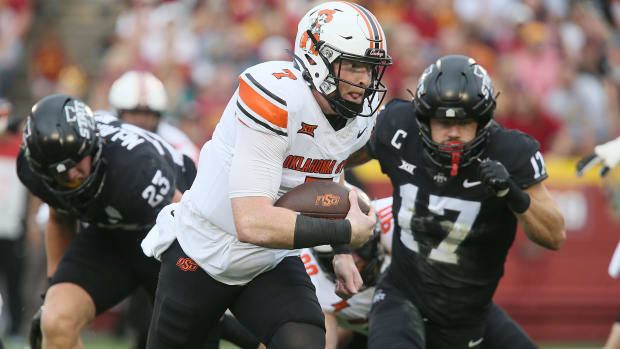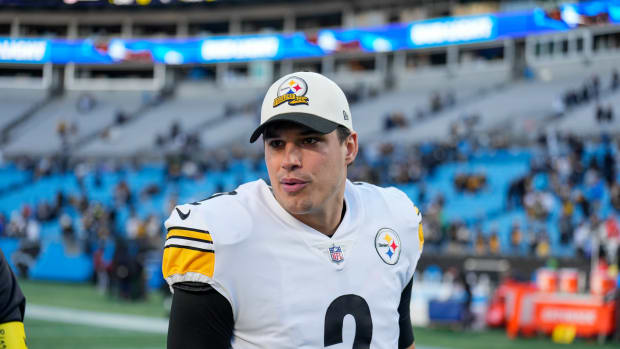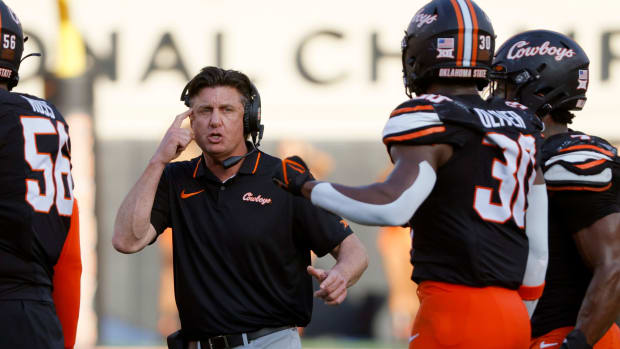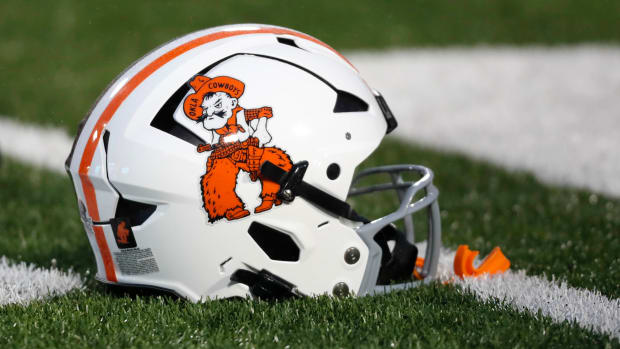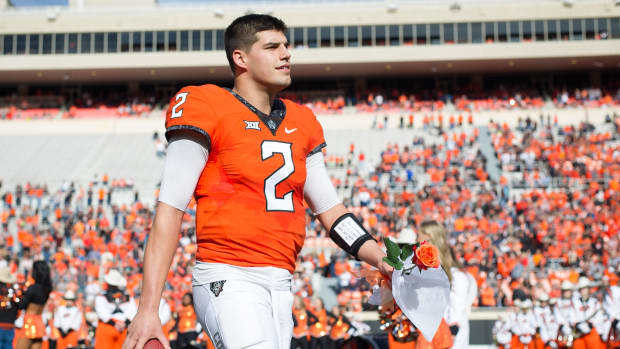With Big 12 Payout Announced, It is Now Up to Football
STILLWATER -- We knew it was going to happen after the cancellation in March of the Big 12 Basketball Championship and the NCAA Basketball Championship, but the question out there was how big a hit would major conferences take, the Power Five leagues like the Big 12. The Big 12 Conference spring meetings, held virtually, concluded on Friday and the payouts for schools was announced as an average of $37.7-million. It was the first decrease in conference and national revenue payments in 13-years, but only $1.1-million less than in 2019. By the end of Big 12 commissioner Bob Bowlsby's end of the year address the attention turned to the future and it is all about football and whether it will be played. Bowlsby is sound more confident about that.
In concluding 2019-20, with the major money sports of football and men's basketball having been played and the budget items for non revenue earning spring sports coming off the expenditures that will allow most schools to balance their 2019-20 school year athletic budgets. With the loss now of major recruiting months on the road in football for April/May and basketball in July as the in-person recruiting ban by the NCAA is extended to July 31 that saves a lot of travel money. Schools hurt the most from the past school year would be those with major financial responsibilities such as coaching buyouts or facility projects.
“Despite the fact that we had an abbreviated year, we had a pretty good year,” Bowlsby said in announcing the payout to the schools.
Oklahoma State University athletic director Mike Holder had said earlier this spring and after the COVID-19 pandemic hit that his department's budget was almost entirely reliant on the conference revenue sharing and Oklahoma State football.
"Just round numbers for our fan base," Holder explained in April. "This last year our budget was about $85-million. So, how do you get to $85-million, in round numbers, I think our allocation from the Big 12 or this last year, I'm talking about fiscal year 2020, the distribution coming from the Big 12. I think we'll be pretty close to whole on that. It is going to be about $40-million and then we may get or generate about $37-million on game days from football. That is our season ticket sales, donor seating, that is our club seats, that's our suite sales."
The major focus of the Big 12 schools now is the start of football, which with the explanation of Mike Holder above proving how important football is to the college athletics financial equation. Not just that, but society is aching for some normalcy and enjoyment, college football delivers is so many ways from a cultural to competitive standpoint.
“You talk about optimism, I am optimistic that we’ll start the season somewhere around Labor Day and I think we’ll get a crack at it,” Bowlsby said on a Zoom conference with media after the Big 12 spring meetings concluded. “I’m bullish about our opportunity and more so than I was 30 days ago. I hope I’m even more so 30 days henceforth.”
This week on Sports Talk with Robert Allen and Friends, Oklahoma State University President Burns Hargis was optimistic about football. He wasn't ruling out a normal stadium, but was more about waiting until late July to have a plan for Boone Pickens Stadium.
"We know so much more today than we knew a month ago, and I would think that by the end of July you would need to have things in place for what your plan is," explained Hargis.
"I think we have around 30,000 season ticket holders or so, if those people came and the people that live together can sit next to each other. Then you could spread it out and there might be a way to do that. I think the idea of getting into and out of the stadium will be a social distancing problem, so maybe everybody has to wear a mask. Those are a challenge. Do we ban tailgating? That would be a popular decision," he said sarcastically.
"We have a lot to decide. I just think it would be really great to play the season and be great to have fans in there in some form," Hargis concluded."
While the Big 12 Conference voted on Friday, May 22 on a three-phase plan to bring student-athletes back to campus, starting with football student-athletes beginning voluntary workouts on June 15. He said that the conference will not tell schools how many fans they can accommodate in their stadium for games this fall.
"Every situation is not the same," Bowlsby explained.
Oklahoma State, as pointed out with President Hargis above, is examining the issue and will have a plan likely announced in late July or early August for the Sept. 3 opener with Oregon State.
As for preparation, head coach Mike Gundy is full steam ahead and as reported first by Pokes Report early this week, The Oklahoma State football staff is back at work and was tested for the coronavirus on Friday and will welcome the first wave of players on Monday, June 1. Another wave will come in on Thursday, June 4, and the remainder of the allowed 110 players will be in on June 8. All will be tested and trained in the protocols to be used to make the facility and workouts as safe and COVID-19 preventative as possible.
